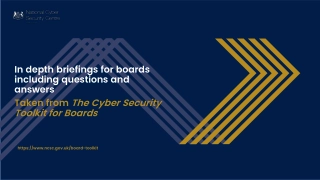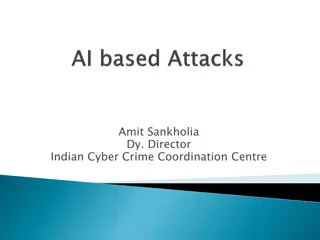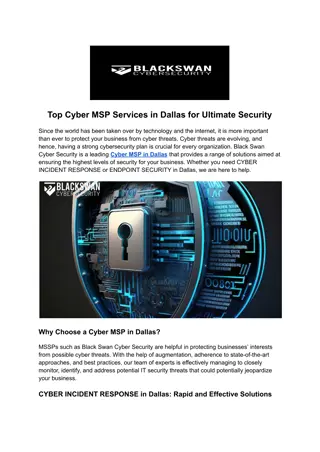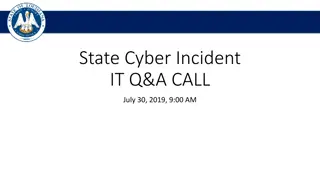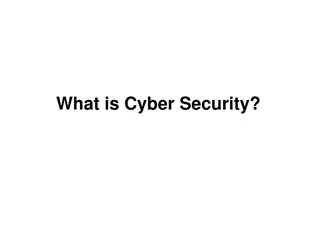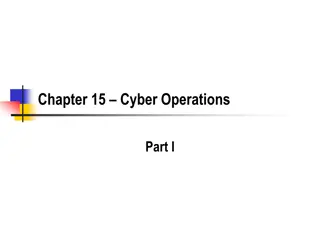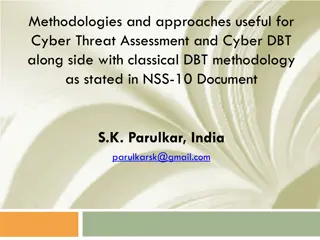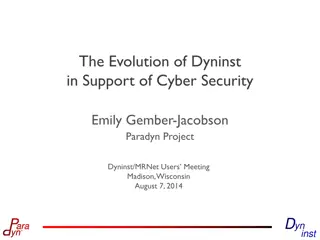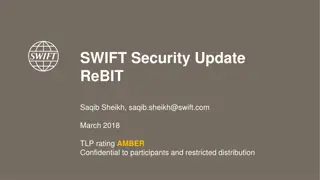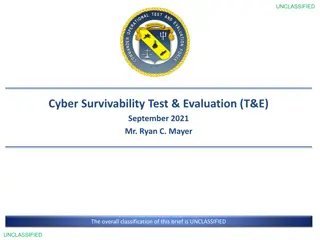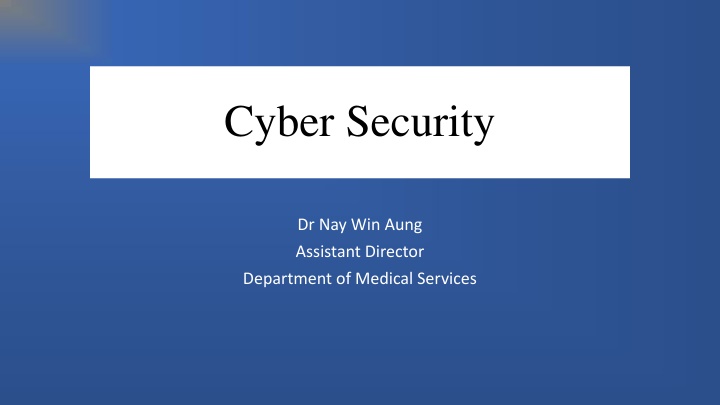
Cyber Security: Threats, Types, and Prevention
Cyber security encompasses the defense of electronic systems and data from malicious attacks. It includes network security, application security, information security, and operational security. Common cyber threats include malware, spyware, ransomware, adware, and botnets. Learn about the various types of cyber threats and methods to strengthen cyber security measures.
Download Presentation

Please find below an Image/Link to download the presentation.
The content on the website is provided AS IS for your information and personal use only. It may not be sold, licensed, or shared on other websites without obtaining consent from the author. If you encounter any issues during the download, it is possible that the publisher has removed the file from their server.
You are allowed to download the files provided on this website for personal or commercial use, subject to the condition that they are used lawfully. All files are the property of their respective owners.
The content on the website is provided AS IS for your information and personal use only. It may not be sold, licensed, or shared on other websites without obtaining consent from the author.
E N D
Presentation Transcript
Cyber Security Dr Nay Win Aung Assistant Director Department of Medical Services
What is Cyber Security? Cyber security is the practice of defending computers, servers, mobile devices, electronic systems, networks, and data from malicious attacks. It's also known as information technology information security. security or electronic
can be divided into a few common categories. Network security is the practice of securing a computer network from intruders, whether targeted attackers or opportunistic malware. Application security focuses on keeping software and devices free of threats. A compromised application could provide access to the data its designed to protect. Successful security begins in the design stage, well before a program or device is deployed. Information security protects the integrity and privacy of data, both in storage and in transit. Operational security includes the processes and decisions for handling and protecting data assets. The permissions users have when accessing a network and the procedures that determine how and where data may be stored or shared all fall under this umbrella.
Types of cyber threats The threats countered by cyber-security are three-fold: 1. Cybercrime includes single actors or groups targeting systems for financial gain or to cause disruption. 2. Cyber-attack often involves politically motivated information gathering. 3. Cyberterrorism is intended to undermine electronic systems to cause panic or fear.
some common methods used to threaten cyber-security: Malware Malware means malicious software. One of the most common cyber threats, malware is software that a cybercriminal or hacker has created to disrupt or damage a legitimate user s computer. Often spread via an unsolicited email attachment or legitimate-looking download, cybercriminals to make money or in politically motivated cyber-attacks. There are a number of different types of malware, including: Virus: A self-replicating program that attaches itself to clean file and spreads throughout a computer system, infecting files with malicious code. Trojans: A type of malware that is disguised as legitimate software. Cybercriminals trick users into uploading Trojans onto their computer where they cause damage or collect data. malware may be used by
Spyware: A program that secretly records what a user does, so that cybercriminals can make use of this information. For example, spyware could capture credit card details. Ransomware: Malware which locks down a user s files and data, with the threat of erasing it unless a ransom is paid. Adware: Advertising software which can be used to spread malware. Botnets: Networks of malware infected computers which cybercriminals use to perform tasks online without the user s permission.
SQLinjection An SQL (structured language query) injection is a type of cyber-attack used to take control of and steal data from a database. Cybercriminals exploit vulnerabilities in data-driven applications to insert malicious code into a databased via a malicious SQL statement. This gives them access to the sensitive information contained in the database. Phishing Phishing is when cybercriminals target victims with emails that appear to be from a legitimate company asking for sensitive information. Phishing attacks are often used to dupe people into handing over credit card data and other personal information.
Man-in-the-middle attack A man-in-the-middle attack is a type of cyber threat where a cybercriminal intercepts communication between two individuals in order to steal data. For example, on an unsecure WiFi network, an attacker could intercept data being passed from the victim s device and the network. Denial-of-service attack A denial-of-service attack is where cybercriminals prevent a computer system from fulfilling legitimate requests by overwhelming the networks and servers with traffic. This renders the system unusable, preventing an organization from carrying out vital functions.
Latest cyber threats Dridex malware In December 2019, the U.S. Department of Justice (DoJ) charged the leader of an organized cyber-criminal group for their part in a global Dridex malware attack. This malicious campaign affected the public, government, infrastructure and business worldwide. Dridex is a financial trojan with a range of capabilities. Affecting victims since 2014, it infects computers though phishing emails or existing malware. Capable of stealing passwords, banking details and personal data which can be used in fraudulent transactions, it has caused massive financial losses amounting to hundreds of millions.
Romance scams In February 2020, the FBI warned U.S. citizens to be aware of confidence fraud that cybercriminals commit using dating sites, chat rooms and apps. Perpetrators take advantage of people seeking new partners, duping victims into giving away personal data. The FBI reports that romance cyber threats affected 114 victims in New Mexico in 2019, with financial losses amounting to $1.6 million. Emotet malware In late 2019, The Australian Cyber Security Centre warned national organizations about a widespread global cyber threat from Emotet malware. Emotet is a sophisticated trojan that can steal data and also load other malware. Emotet thrives on unsophisticated password: a reminder of the importance of creating a secure password to guard against cyber threats.
Cyber safety tips - protect yourself against cyberattacks How can businesses and individuals guard against cyber threats? Here are our top cyber safety tips: 1. Update your software and operating system: This means you benefit from the latest security patches. 2. Use anti-virus software: Security solutions like Kaspersky Total Security will detect and removes threats. Keep your software updated for the best level of protection. 3. Use strong passwords: Ensure your passwords are not easily guessable.
4. be infected with malware. 5. Do not click on links in emails from unknown senders or unfamiliar websites: This is a common way that malware is spread. 6. Avoid using unsecure WiFi networks in public places: Unsecure networks leave you vulnerable to man-in-the-middle attacks. Do not open email attachments from unknown senders: These could


